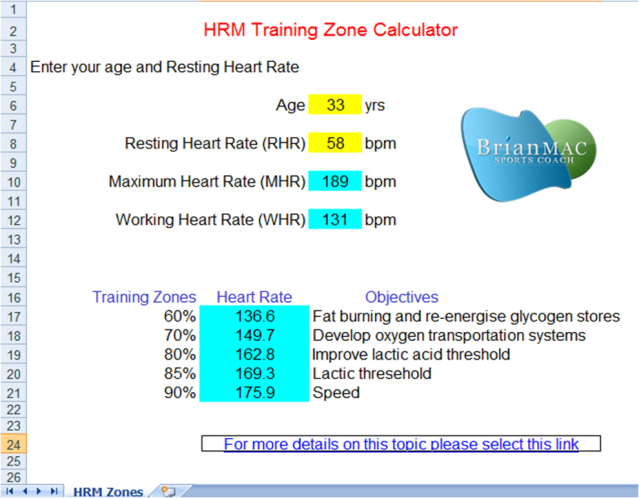I tend to have a low resting heart rate – anywhere between 54 and 58 beats per minute. When I run, my heart rate tends to be around 168-172. I always assumed this was fine, but I noticed other women I ran with had heart rates around 155-158 and their resting heart rates were even higher than mine. It made me slightly concerned that I might be working WAY too hard. It also made me realize that I have no idea what the right target heart rate for me is….
I wear a heart rate monitor, but generally only to calculate my calorie burn. I realized I need to know more to get the most out of my workouts.
Here is what I learned. Hopefully this will help anyone else that has had questions about heart rate training, max heart rates and target heart rates for different types of training.
Maximum Heart Rate
If you are using a heart rate monitor as a training aid, you should first identify your maximum heart rate. This number will help determine the training zones that are right for you.
There are a few different ways to calculate max heart rate (or MHR), but I will use the Mayo Clinic standard which is:
220 – (age) = MHR
Given this calculation, and my age of 33, my MHR is 187.
Note: This calculation only provides an average. The best way to determine your actual MHR would be to conduct a stress test.
Target Heart Rate Zones
Knowing the max heart rate (MHR) can then help you determine what your most effective heart rate zones are for training.
According to active.com, you should aim to stay at 55 to 85 percent of your maximum heart rate for at least 20 to 30 minutes to get the best results from aerobic exercise.
Brian Mac Sports Coach has a link to a great spreadsheet that will calculate all your target heart rate zones for you. Clink on this link to download an Excel spreadsheet that will calculate your training zones for you.
Here is what mine looks like:
Fat Burning Zones (60%)
For those of us that want to burn fat, it’s great to include one or two cardio sessions per week devoted to this. The fat burning zone is at about 60% of MHR and should be sustained for at least 40 minutes. It may feel like you aren’t working as hard as you’d like, but the idea here is consistency and time.
Lactic Acid Threshold (80 – 85%)
These zones are based on endurance training. This would be the ideal zone for me to reach while running, for example.
This zone can be used for intermittent (sprints) or for long continuous endurance workouts. As you run more, and increase your endurance, the body increases it lactic acid threshhold allowing you to work harder and for longer periods of time.
To learn more about the physiology of this, RunningTimes.com has a great article explaining it.
What I’ve Learned
While it’s safe enough for my heart rate to be that high while I’m running, I”m probably working a little harder than I need to be. Maybe a longer warm-up, better breathing technique, and a slightly slower pace will help me manage that heart rate so it’s slightly lower while running? Something to work on in the next few months.
Hope this post cleared up some basic questions about HR training for you.

